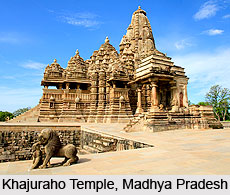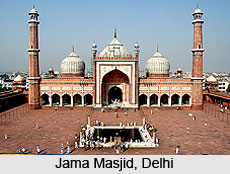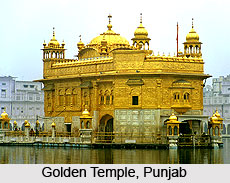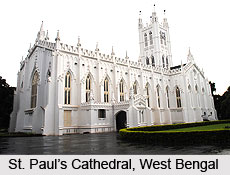 Indian religious monuments trace the history of religions in India. India is a land of mixed culture and thus secularity in every form is retained here. In all ages religion has remained the matrix of Indian civilization and the history of India are linked with history of religion. The many thousands years of Indian history reflect the evolution of several religions that reigned supreme and died down. However, such religions have also left behind its footprints through sacred homes. In all ages religion has remained the milieu of parameter of the progressive Indian civilization. Years of history have had witnessed the flourishing of numerous religions. The Indian kings were also religious minded and patrons of the religions they followed. They constructed places of worship of their respective religions all over their empire. The artisans of the time also found a way to put their skills and creativity to best use in building them.
Indian religious monuments trace the history of religions in India. India is a land of mixed culture and thus secularity in every form is retained here. In all ages religion has remained the matrix of Indian civilization and the history of India are linked with history of religion. The many thousands years of Indian history reflect the evolution of several religions that reigned supreme and died down. However, such religions have also left behind its footprints through sacred homes. In all ages religion has remained the milieu of parameter of the progressive Indian civilization. Years of history have had witnessed the flourishing of numerous religions. The Indian kings were also religious minded and patrons of the religions they followed. They constructed places of worship of their respective religions all over their empire. The artisans of the time also found a way to put their skills and creativity to best use in building them.
Features of Indian Religious Monuments
Religious monuments in India include astounding Diasporas of temples, mosques, churches, Gurudwaras and monasteries. Many Indian religious monuments were carved out of a single piece of rock or by piling pieces of rocks one upon another to extraordinary heights. Indian religious monuments in southern part of India are glaring examples to this fact. Indian architecture and sculpture in all ages explored new heights of glory. Several influences and styles came in and blended to generate a whole new form of perfection. More amazing was the fact how the craftsmen built such magnificent works of art and engineering marvels with the primitive technology. Myths and legends go into the making of many Indian religious monuments. The Indian artists` imaginations still continue to fascinate the people around the world.
 Hindu Temples in India
Hindu Temples in India
Hindu temples are the holy monuments visited by especially Hindus. Dedicated to a specific deity, Hindu temples are scattered at the nook and corners of the country and are considered as the monuments of great reverence. Build during different eras by different religious patrons, these temples are structured in varied architectural designs. Ranakpur Temple, Mahabalipuram Temple, Kanchipuram Temple and Varanasi Temple are some of the magnanimous works of the artisans of medieval age. Bharat Mata Temple, Durga Temple, Vishwanath Temple, Sankat Mochan Temple and Tulsi Manas Temple are also some notable Indian religious monuments. Other temples exhibiting magnificent artworks include Khajuraho Temple, Orcha Temple, Lingaraja Temple, Tirupati Temple, Kailash Temple and many others.
Mosques in India
Mosques are not only considered as religious centres for Muslims but are also the centres of learning. A number of mosques were built in India in the medieval era during the rule of Delhi Sultanate and Mughal emperors. Their patronage for art also found profound expressions through these religious monuments establishing them among the architectural marvels of India. Among the mosques, Jama Masjid in Delhi is the most significant of all. The pain endured to build this mosque can be ascertained, knowing the fact that over 5,000 workers toiled over a period of six years to build this mosque in Delhi. Apart from the Mughals, other Muslim rulers also have a significant contribution in erecting the plethora of mosques in different parts of the country. Islamic art adorning these mosques can be seen finely blending with other artistic elements in many cases. Other prominent mosques of India include Mecca Masjid, Adhai Din-Ka-Jhonpra, Kabuli Bagh Mosque, Rani Sipri Mosque, Quwwat-ul-lslam Mosque, Bara Imambara, Nakhoda Masjid and many more.
 Gurudwaras in India
Gurudwaras in India
Gurudwaras are the religious centres of the people belonging to Sikh religion and literally refers to a doorway to seek the Guru. These are extensively spread all over the country and in addition to serving as pilgrimage centres; these also form alluring tourist destinations. These revered places, often related to an aura of tranquillity, are also the manifestations of splendid architecture. Golden Temple in Amritsar is an incredible piece of art. Build in 17th century; it is an exquisite marble work with golden plates covering the exterior of the Gurudwara`s upper floor and domes. Other significant Gurudwaras in India are Hemkund Sahib Gurudwara, Gurudwara Nanak Jhira Sahib-Bidar, Gurdwara Guru Nanak Dev and others.
Churches in India
Churches of India serve as the religious centres for the Christian community in India. Standing gracefully throughout the country, these also reflect the cultural influence on India during the colonial era. A number of churches were erected during the British rule in India which have strengthened the Christian beliefs in India and have continually sheltered a number of Christian devotees. Elegant architecture and enchanting embellishments form the major features of these monuments which also promote them as monuments of tourist attraction. Basilica of Bom Jesus and St. Paul`s Cathedral are the two prominent churches in India. St. Paul`s Cathedral, consecrated in 1874 stands on the "island of attractions" in Kolkata. Apart from these, other famed churches of India are Church of St. John of God, Church of Our Lady Of the Mount, St. Mary`s Church, Medak Church, Gunadala Church, Church of St. Francis Xavier etc.
Buddhist Temples in India
 Buddhist temples in India have been an integral part of Buddhism, a religion which has its origin enrooted in India. Many of these monuments date back to the reign of the king Ashoka. Over time a number of Buddhist temples have been built in different parts of India to refuge the Buddhist devotees. The stupas and monasteries are other major Buddhist religious monuments, found in large number in South India. Nalanda is both a university and a monastery for the Buddhists. Besides, Vaishali, Sanchi and Sarnath are also important stupas in India. Other important Buddhist temples in India include Spituk Monastery, Hemis Gompa, Enchey Monastery, Tawang Monastery, Bomdila Monastery etc.
Buddhist temples in India have been an integral part of Buddhism, a religion which has its origin enrooted in India. Many of these monuments date back to the reign of the king Ashoka. Over time a number of Buddhist temples have been built in different parts of India to refuge the Buddhist devotees. The stupas and monasteries are other major Buddhist religious monuments, found in large number in South India. Nalanda is both a university and a monastery for the Buddhists. Besides, Vaishali, Sanchi and Sarnath are also important stupas in India. Other important Buddhist temples in India include Spituk Monastery, Hemis Gompa, Enchey Monastery, Tawang Monastery, Bomdila Monastery etc.
Jain Temples in India
Jain temples are scattered throughout India serving as the sacred places for the people following Jain religion. These are usually extensively embellished and form some of the most inviting tourist destinations. The religious philosophy and distinct architectural style of Jains finds prominent expression through these temples. Apart from being the religious sites these are also the excellent centres for exploring the history and evolution of the religion in the country. Some of the famed Jain temples in India are Sri Digambar Lal Mandir, Rishabhdeo temple, Ranakpur temples, Dilwara temples, Gomateswara temple, Ajit Nath temple and others.



















